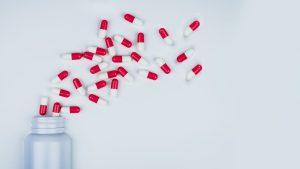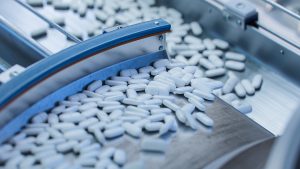Steve Brooks, chairman of the AMR Industry Alliance’s manufacturing working group, discusses AMR related to antibiotic manufacturing and how the sector can address risks.
Antibiotic resistance (AMR) is often framed as a clinical or hospital-based issue. Access to research on appropriate drugs, innovations, and new antibiotics and diagnostics remains a major concern, but less obvious drivers of resistance are rooted in our environment.
Ironically, the very production of antibiotics we need has been overlooked for too long. If antibiotic production waste is not properly controlled, the antibiotics are released into the environment. For example, wastewater discharged into rivers at concentrations that could lead to the development of resistant bacteria. Resistance can spread to the environment.
The results of AMR, driven by a variety of factors, are incredible. In 2019, AMR directly caused 1.27 million deaths, and was linked to nearly 5 million people overall, according to the Lancet. Without action, AMR could have taken 10 million lives a year by 2050, surpassing cancer as a global killer.
The environment and human health are closely linked. Therefore, it is important for antibiotic producers to minimize and control emissions from the manufacturing process.
Fortunately, there is a momentum to take action. Following last year’s UN High Level Conference (HLM) on AMR, we have seen meaningful integrity between public and private actors. The AMR Industry Alliance helped to promote this advancement by participating in HLM and creating industry manufacturing standards that limit the emissions of active pharmaceuticals to the environment. At about the same time, WHO issued guidance on managing antibiotic manufacturers’ emissions.
Additionally, the UK Standards Agency (BSI) has developed independent certifications for industry standards and awarded the BSI Kitemark™ to minimize the risk of antibacterial resistance when antibiotics are manufactured according to standard requirements. This verification provides manufacturers with pathways that indicate that their operations meet strict environmental thresholds, and antibiotics are generated in a way that minimizes the risk of resistance that develops in the environment.

Already, the Norwegian Hospital Procurement Trust (SykehusinnkjøpHF) has adopted certification in its procurement scorecard, and the UK NHS has requested pharmaceutical companies to apply for antibiotic subscription models to demonstrate responsibility manufacturing through this certification. Based on implementation experience and WHO guidance, the alliance is currently revising the standards to be more closely aligned with WHO guidance.
Strong enthusiasm from manufacturers and other stakeholders allows for a global shift towards effective control of antibiotic production emissions, but only when adoption is expanded.
How resistance develops and why the environment is important
Most people associate AMR with overprescribing antibiotics, but this is a real problem. However, few people realize that antibiotic resistance can develop before one tablet is collected.
If not well controlled, antibiotic-producing wastewater may contain concentrations of antibiotic residues that may promote the development of resistant bacteria and spread to the environment, leading to difficult-to-treat human infections. When these resistance genes pass through ecosystems, human populations, and food systems, they create the potential resistance that develops in pathogenic bacteria that impair the effectiveness of antibiotics.
Policymakers around the world have largely regulated drug manufacturing due to quality and more general environmental risks, but there are no regulations limiting antibiotic emissions in waste streams. Given this challenge, environmental emissions from pharmaceutical manufacturing have been largely unchecked. The AMR Industry Alliance and its member companies stepped in to address this gap.
From principles to practice: New manufacturing standards
To address this challenge, the AMR Industry Alliance is one of the largest private sector coalitions providing sustainable solutions to curb AMR, developing and publishing environmental standards for responsible antibiotic manufacturing. This standard must meet a science-based threshold known as the predicted NO effect concentration (PNEC), which defines the level of a particular antibiotic in wastewater that is unlikely to promote the development of resistance in the environment.
Importantly, standards developed in collaboration with BSI, and related PNECs, are not limited to Alliance members. They are open and freely available to any manufacturer, investor or procurement institution for use to set expectations, verify performance and accelerate global change. BSI has created the BSI Kitemark™ certification to minimize the risk of antibiotic resistance. This is the first programme to enable manufacturers to demonstrate that antibiotics are being produced in facilities with effective environmental controls. It can be certified with both active pharmaceutical ingredients (API) and completed medicines. It involves identifying environmental risks, minimizing emissions, and verifying that discharges are below the predicted ineffective concentrations.

The program was shaped by a cross-sector coalition, including healthcare procurements, financial investors, regulators, civil society and public health agencies around the world. The result is trustworthy, viable, and globally relevant authentication.
Calling for policymakers and industry leaders
We are a crucial moment. Addressing AMR in an environment may not create headlines like new mysterious drugs. But that is the fundamental and resolvable part of the AMR crisis. Controlling production emissions helps minimize the risk of resistance that develops from antibiotic production, helping to reduce resistance and spread across borders and generations.
Potential risks are clear and exist to minimize tools. I need scale now.
We encourage:
Procurers should make environmental standards a requirement for antibiotic bidding and purchasing frameworks. Governments and regulators need to formally recognize and integrate AMR risk reduction into national and international environmental policies. Manufacturers must adopt standards and pursue certification regardless of their membership in the Alliance. Transparency is not only possible, but is increasingly anticipated. Investors should use environmental AMR risk to assess supply chain sustainability and resilience.
This is not just about compliance. It’s about reliability. Manufacturers who actively demonstrate responsible practices will protect public health and future locations in the global antibiotic market.
The AMR Industry Alliance continues to work to help industry, government and global healthcare professionals work together to overcome this threat. When it comes to AMR, what ends in the water doesn’t stay there. It’s coming back to us all.
Source link

